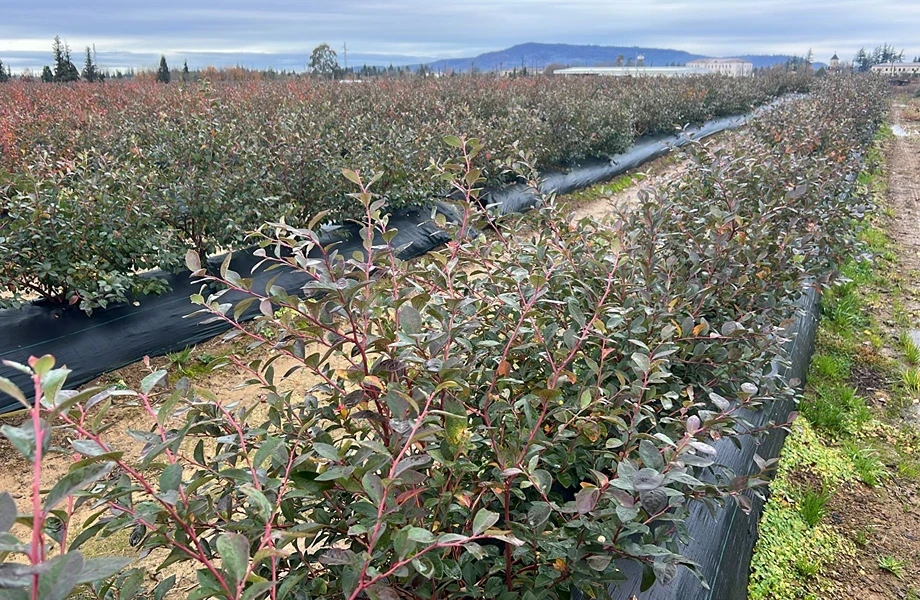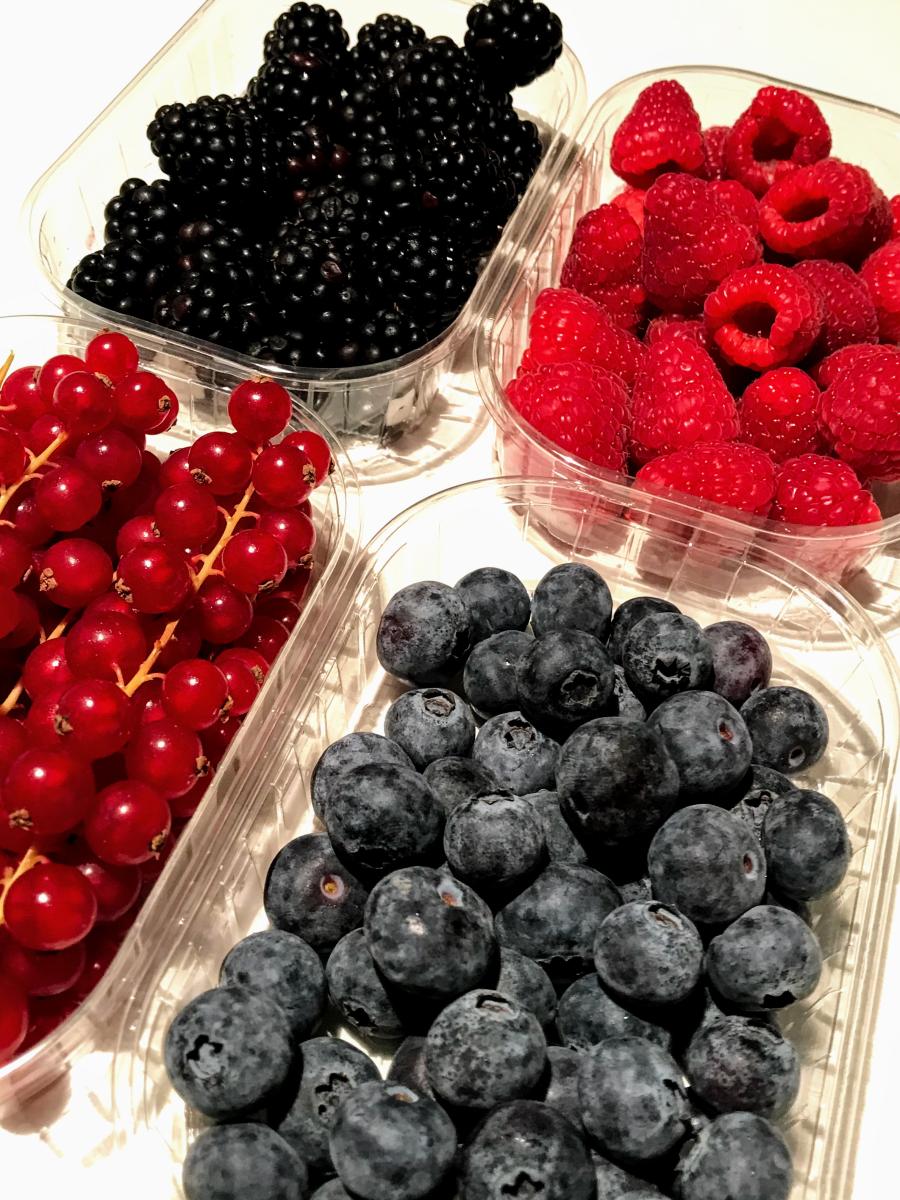Jorge Duarte, a Portuguese agronomist who advises berry growers, was hired by USAID's agricultural programme in Georgia to advise local growers. After a series of online seminars in 2020, he visited berry plantations in Georgia twice in April and July 2021. As Jorge has extensive experience working with berries in Morocco, Egypt, Romania, Spain, Italy, Turkey, EastFruit's Georgian experts discussed with him the current status and prospects of blueberries production in Georgia.
What can you tell us about the raspberry sector and blackberries in Georgia?
The main trend is that raspberries and blackberries are planted in the open field in Georgia. In my experience, this is not the best choice for the fresh market. Usually, open-field berries are sold to the processing sector because open-field production opens the door to various diseases, scald, and mold on the fruit, making it less valuable for the fresh market. All these climate-related problems reduce production potential and marketable yields. Berries for fresh markets are produced in tunnels for protection from rain, direct sunlight, pests and diseases.
Most of the varieties, such as Nova, Caroline, Himbo Top, and Tulamagic (primocane varieties) that I have seen in Georgia are old. Only recently has the USAID Agriculture program introduced new varieties to growers, such as the primocane Amira, which can be harvested in the fall and spring. Early varieties are important because summer is hot in the regions where raspberries and blackberries are planted in Georgia. The temperature is high, above 30 degrees Celsius, and humidity is low, below 50 percent in summer. These conditions are not favorable for berry production. From my point of view, the best climate for summer picking in Georgia is in the Guria region because of the moisture from the Black Sea and the milder temperature, as well as the softer climate. Therefore, it would be ideal for Georgia to produce raspberries and blackberries in spring and fall in tunnels and shade nets to improve quality and yields. The addition of spring and fall production to the main production season in summer and a good mix of varieties allow them to be presented on supermarket shelves for a longer time and secure long-term contracts
How can Georgian farmers improve quality now?
They can start by installing shade nets in the orchards to avoid the negative effects of the sun. This is something we are already discussing with growers, but they have not yet started to invest in it. According to my information, few suppliers are working on the Georgian market, which makes it difficult to import materials or makes imports too expensive. Having shade nets is only one thing to improve the quality now. It is not the ultimate solution.
Another point is the high pH level in the soil. It is difficult to grow plants above the pH 8 level without correcting the soil because most nutrients are absorbed by the pH 6-7 levels in the soil. Most soils are not amended with elemental sulphur to lower the pH levels in Georgia. This should be done a minimum of 6 to 12 months before planting to create a reaction and adjust the pH shift in the soil. In addition to this, growers should use more acidic fertilisers such as ammonium nitrate, ammonium sulphate and monoammonium phosphate to maintain a lower pH in the root zone. This also includes acidifying the irrigation water due to the high levels of bicarbonate in it, which creates a strong buffer in the pH level and consequently in the soil in the root zone.
When starting from scratch, of course, the key to success is to have the right plan from the start. You should start by choosing varieties suitable for Georgia to harvest in spring and autumn and building specific tunnels for each variety.
I would also like to advise farmers to plant more seedlings per hectare than are being planted now. Normally 12000 to 16000 seedlings are planted per hectare, but this number is 6000 to 7000 in Georgia. This system was used in the US and Europe 20-30 years ago, when farmers had more space between plants because they grew them in bundles. Today, 3 to 4 plants are planted in a linear metre as a single plant, with a trellis system in Europe.
The Georgian growers I visited use a trellis system, but the distance between the plants is 0,75 or 1 m instead of 0,25 or 0,33 m. Since the old system is mainly used with floricultural varieties in Georgia that only bear fruit after the first year in the ground, the plants will multiply from the root suckers, increasing the density of the orchards, but to achieve higher yields, growers should start with more plants.
Is it possible to reduce costs when producing for processing?
To reduce costs, the berries are harvested by machine. Hand picking will always be more expensive, however, we cannot avoid hand picking when we target the fresh market. At the same time, labour shortage is already a problem in Georgia. When working with the fresh market, there will be a certain percentage of unconditioned fruit that will go into processing anyway, so the cost of hand picking should be considered.
When harvesting for processing, growers can leave the fruits on the plants for a longer period and harvest them at one time, so the labor cost is lower, however, berries for processing are also much cheaper, growers should consider the requirements of buyers. In Portugal, if you harvest blackberries for the fresh market, you can harvest 3-4 kg in one hour on average, but for processing, you can harvest 10-12 kg, according to harvest data from growers in the industry.
What is your advice to growers or those planning to invest in this sector?
Gain knowledge before planting. Visiting raspberry farms and blackberries outside your own country should be the first thing you do. This will acquaint you with new trends and the future of this industry. If there is not enough knowledge in your country, you should seek outside support for advice that can help you in business development.
Find out about the best varieties on the market, talk to consultants and nurseries. Select the most suitable varieties for export. Selling locally and exporting is different. Locally you can sell more ripe fruit, but if you have to transport it by plane or truck, you should have the best varieties with the best shelf life to maintain quality.
For local or neighbouring export markets such as Russia, varieties such as Tulameen, Glen Ample, Imara, Kweli, or Mapema may still be the most attractive, as in Eastern European markets. For long-distance export, it is better to get new varieties with a longer shelf life such as Amira, Lagorai, Wengi, Optima, Enrosadira, Kwanza, Eros, or Clarita. Most of the best varieties are protected by a licence. Only licensed nurseries like Driscolls, Berry World, ABB Breeding or Planasa sell them.
Make an analysis of strengths and weaknesses to see the challenges you face.
Find the best land and water to start your project. I have seen that some regions lack water. State water supply canals are in deficit or non-existent. Without water availability, berry production will be poor. The minimum is to have a source with at least 8 m3/hour.
Order raspberry plants or blackberries at least 6 months before planting. Even if you want to plant long canes (mature canes ready to produce) in February-March, you should order these plants at least 9-12 months in advance.
Consider not only production, but also post-harvest management. The cold chain from field to farm is a key to maintaining the quality and freshness of the berries.
Low demand is traditionally a weak point in berry markets, but low supply is also often a problem, especially when markets are just starting to develop. Georgia needs to create a constant supply in order to have a constant demand. When consumers start seeing berries more often on the shelves, their behaviour will change, but it will take time, because berries might still be considered a luxury fruit.
Source: East Fruit









